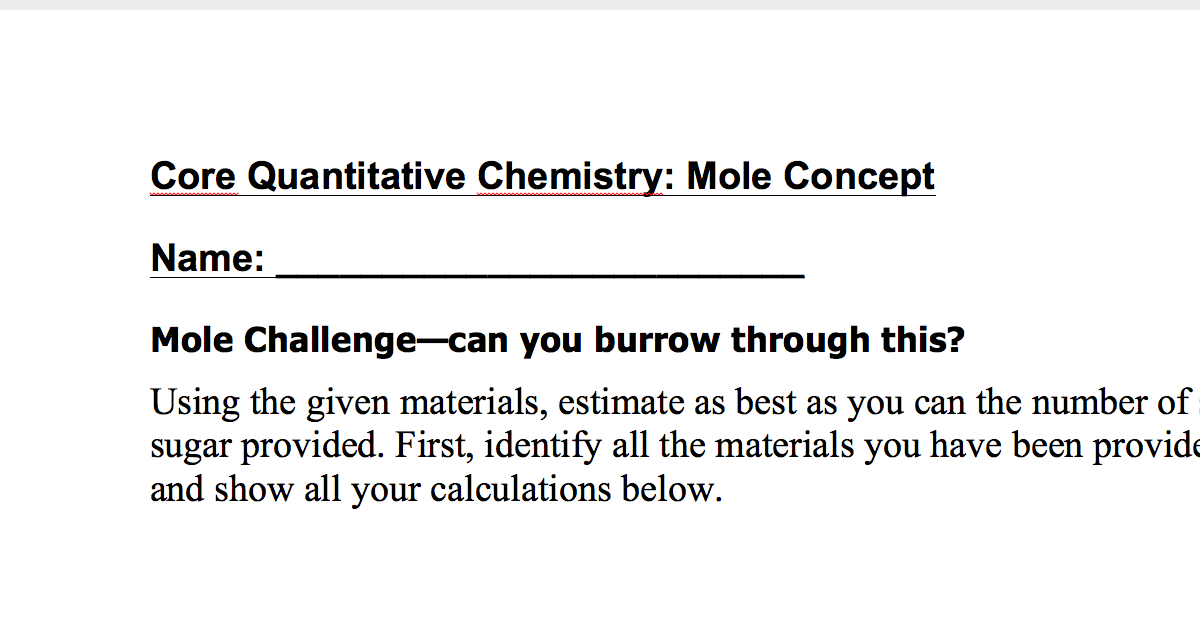 If you have read the last blog post (Teach, to Learn; Learn, to Teach) you know that these posts will be about the challenges I put my first year IB Chemistry students through in 2009-10 in Baku, Azerbaijan.
If you have read the last blog post (Teach, to Learn; Learn, to Teach) you know that these posts will be about the challenges I put my first year IB Chemistry students through in 2009-10 in Baku, Azerbaijan.
The first assessed challenge was called “Sand Grains in the Sahara.”
The challenge: Determine an estimate for the number of sand grains in the Sahara desert.
But before I let them loose to figure that one out, I had them do a warm up exercise, an exercise to help them acquire some of the skills necessary with completing the challenge.
I provided them with the following:
- 150 ml of sugar in a 200-mL beaker
- forceps
- graph paper
- rulers
- Black piece of poster paper
- Balance
- scalpels
and asked them to estimate the number of sugar grains in the sample. (See image at the top for the actual wording in the instruction sheet.)
The estimate could not have been arrived at directly — i.e. by counting the individual grains. If attempted, it would have been not only a tedious process but also extremely inefficient!
The point of this exercise was to count indirectly. To arrive at an indirect estimate by making other measurements and manipulating those figures.
What’s more, in the process of arriving at an estimate, the students learn about making assumptions and how those assumptions affect their final result, if at all, and in the process develop evaluative skills.
Have a close look at the materials and instruments provided. How many ways are there of determining the number of sugar grains in the sample? Have a go yourself!
After the students completed the task and learned all the necessary lessons/skills, they were then presented with the assessed challenge.
I gave each group a few vials of sand. I told them that they could use anything and everything in the classroom, including the materials and instruments they used in the “Mole Challenge.” (In my classroom/chemistry lab, I had a number of desktops hooked up to the internet.)
How would they have gone about doing this?
- First, they would have figured out the information/data they needed (just as they had done with the Mastermind challenge).
- Second, they would have gotten the necessary information/data by making measurements and/or by looking them up elsewhere and, if not available at all, by either determining themselves or making assumptions about them.
- Finally, they would have arrived at the answer by manipulating the information/data.
Upon completion of the challenge, as you can see, the Beauties came on top in this one!
Naturally, all of this is Chemistry/Science. But the most important idea that the students needed to get from this exercise is the following:
That which cannot be counted directly or directly reasonably (such as, atoms, molecules, microbes in a sample of water, particulates in the air, iguanas in the Galápagos Islands, Dolphins in the Atlantic, a species of animal in the Serengetic plains etc.) can be counted indirectly.
And in Chemistry, we do that ALL the time! Central to doing that in the subject is the concept of Mole, which, if you didn’t know, is actually a YUGE number, not a small furry, burrowing animal! 🙂
How would you have gone about meeting either of the challenges? Please share below. If you do, be sure to state the assumptions made in the process.
